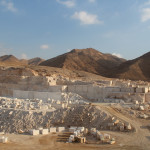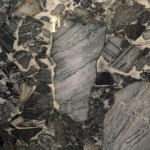Pulmonary High Blood Pressure WHO Teams: Comprehending the Various Categories
Pulmonary high blood pressure (PH) is a complicated and major medical problem characterized by hypertension in the arteries of the lungs. It influences the ability of the heart and lungs to work appropriately, resulting in symptoms such as shortness of breath, fatigue, upper body pain, and fainting. The Globe Health And Wellness Organization (THAT) has actually developed a classification system to classify the different kinds of brasillian spider nedir pulmonary hypertension based upon their underlying causes and pathophysiology. This write-up aims to give a helpful introduction of the that teams of pulmonary high blood pressure.
Group 1: Pulmonary Arterial High Blood Pressure (PAH)
Team 1, also known as pulmonary arterial high blood pressure (PAH), includes problems where the walls of the little arteries in the lungs become thick and narrow. This enhanced resistance causes the heart to function tougher to pump blood with the lungs, causing greater blood pressure. PAH can be idiopathic (of unidentified cause) or connected with numerous underlying conditions such as connective cells conditions, HIV infection, genetic heart condition, and particular medicines or toxins.
PAH is a dynamic disease that can result in right cardiac arrest if left unattended. Therapy options include medicines that expand the capillary in the lungs, boost heart function, and decrease signs and symptoms. In many cases, lung transplantation might be required.
Common signs associated with PAH include shortness of breath, fatigue, wooziness, breast discomfort, and puffy ankle joints or legs. Early medical diagnosis and intervention are essential for boosting end results and quality of life for people with PAH.
Team 2: Lung High Blood Pressure As A Result Of Left Heart Disease
Team 2 lung high blood pressure, also called lung high blood pressure as a result of left cardiovascular disease, occurs when there is enhanced stress in the pulmonary arteries due to a trouble with the left side of the heart. This can be brought on by conditions such as left ventricular dysfunction, valvular heart disease, or cardiac arrest. The boosted pressure in the left side of the heart leads to fluid back-up hondrexil chile precio in the lungs, causing lung high blood pressure.
Treatment for group 2 pulmonary high blood pressure involves handling the underlying left cardiovascular disease. This might include drugs to boost heart function, control high blood pressure, or repair or replace defective heart shutoffs. Way of life adjustments such as keeping a healthy weight, exercising frequently, and decreasing salt consumption may additionally be suggested.
Team 3: Pulmonary High Blood Pressure Due to Lung Diseases and/or Hypoxia
Group 3 lung high blood pressure is characterized by hypertension in the lung arteries as a result of lung illness or conditions that cause low oxygen levels in the blood, known as hypoxia. Instances of lung illness that can bring about team 3 lung hypertension include persistent obstructive pulmonary condition (COPD), interstitial lung disease, and rest apnea.
Managing group 3 lung high blood pressure involves dealing with the underlying lung illness and resolving any hypoxia. This might include oxygen therapy, the use of medications to boost lung feature, and way of life changes such as smoking cigarettes cessation and pulmonary rehabilitation. Close tracking of the disease progression is vital in order to readjust therapy as needed.
Group 4: Chronic Thromboembolic Lung High Blood Pressure (CTEPH)
Team 4 lung high blood pressure, likewise known as persistent thromboembolic lung hypertension (CTEPH), is an one-of-a-kind type of the condition. It happens when embolism create in the lungs and stop working to dissolve naturally, resulting in increased pressure in the pulmonary arteries. CTEPH can be an effect of previous embolism in the lungs, referred to as intense pulmonary embolism.
Diagnosis of CTEPH is usually postponed, as signs and symptoms can be nonspecific and comparable to various other kinds of pulmonary high blood pressure. Therapy for CTEPH may include lung endarterectomy, a surgical procedure to eliminate blood clots from the arteries in the lungs. In situations where surgical treatment is not feasible, medicines to boost blood circulation via the lungs and reduce signs and symptoms may be suggested.
Team 5: Lung High Blood Pressure with Unclear Multifactorial Systems
Team 5 pulmonary high blood pressure includes conditions that do not fit right into the other that groups and have unclear or multifactorial reasons. This consists of conditions such as sarcoidosis, histiocytosis, and various other unusual conditions. The therapy technique for team 5 pulmonary hypertension relies on the underlying condition and might involve a mix of drugs and targeted treatments.
- Overall, pulmonary hypertension is a facility and life-altering problem that calls for a multidisciplinary technique to diagnosis and management.
- Early detection, exact classification, and tailored treatment strategies are crucial for improving end results and quality of life for people with lung high blood pressure.
- If you or a loved one are experiencing signs and symptoms symptomatic of lung hypertension, it is very important to look for medical attention without delay for correct examination and medical diagnosis.
- Bear in mind, this write-up serves as a basic overview and does not change expert clinical recommendations.
By understanding the different that teams of lung high blood pressure, healthcare professionals and people can interact to develop customized treatment strategies that resolve the underlying causes and supply optimum treatment.





